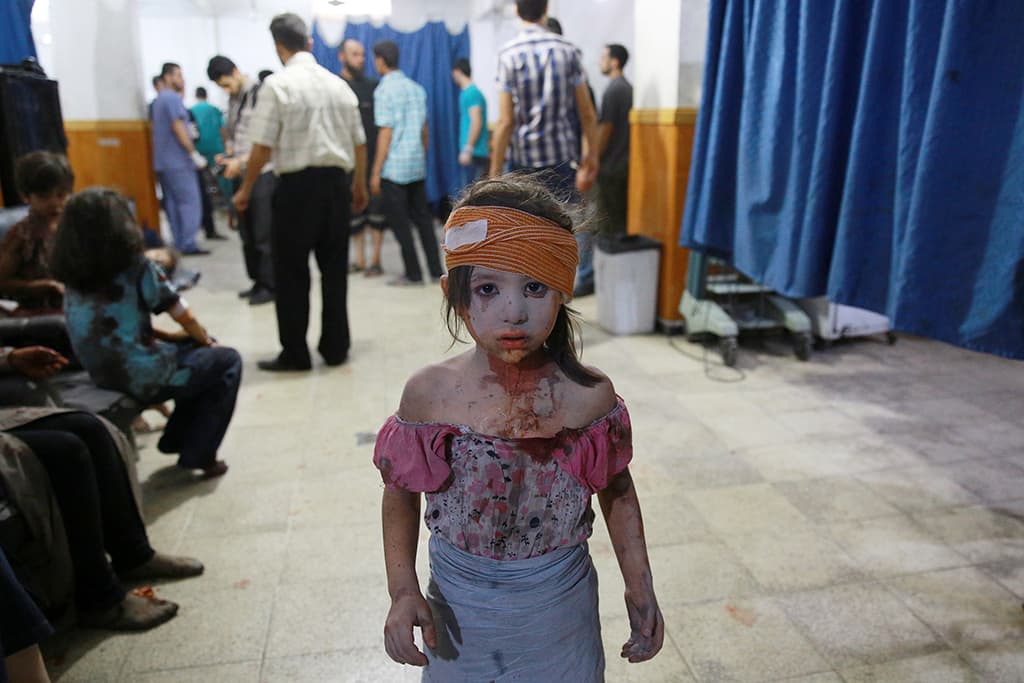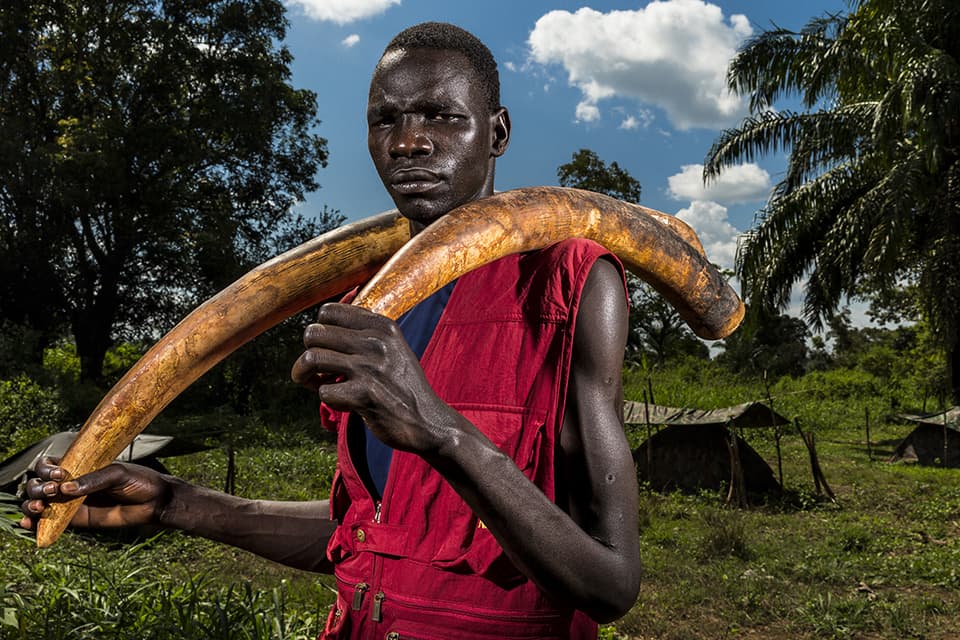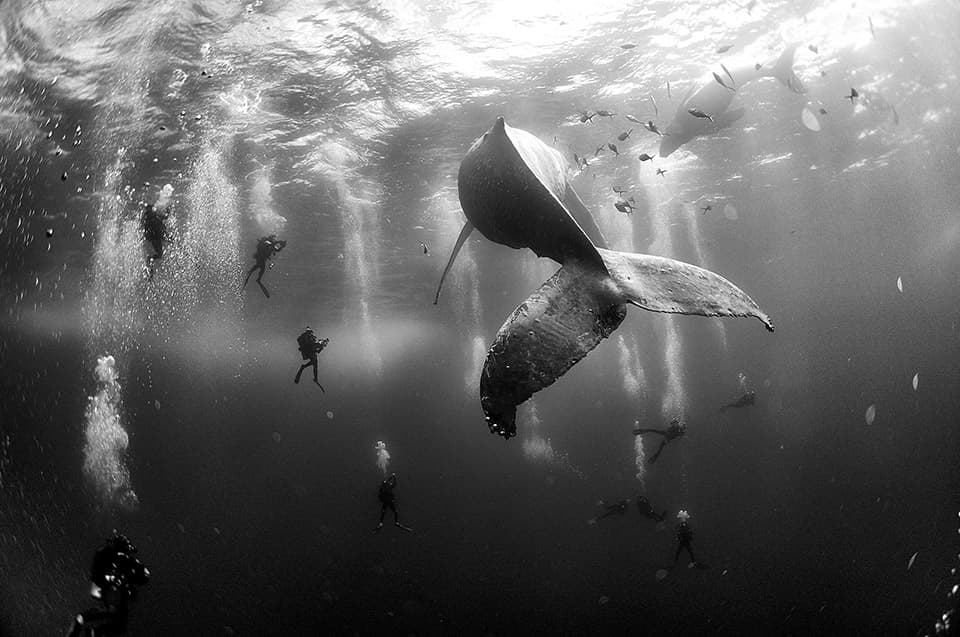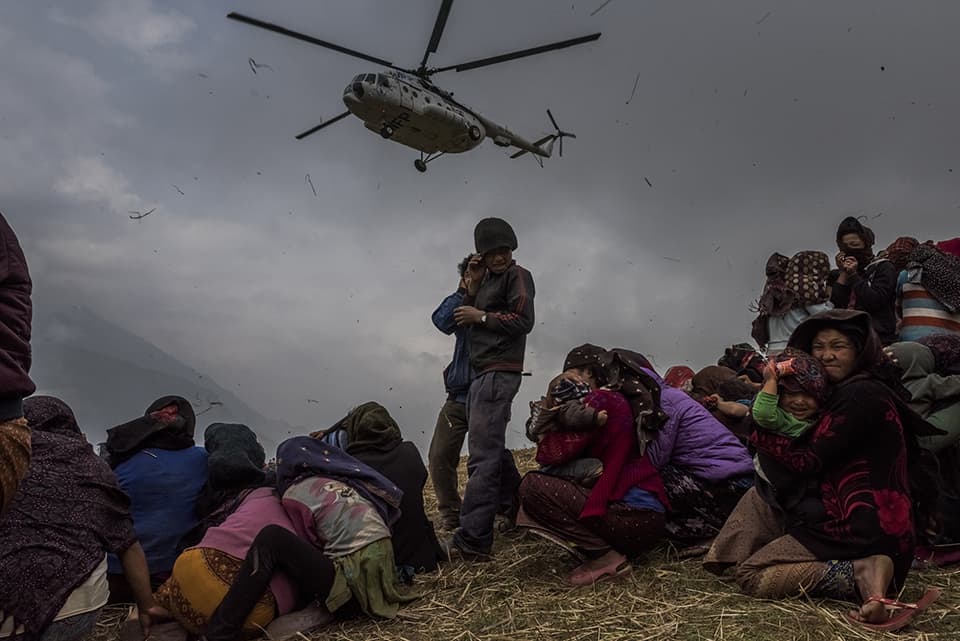A man passes a baby through the fence at the Serbia/Hungary border in Röszke, Hungary, 28 August 2015
© Warren Richardson
Australian photographer Warren Richardson beat a record 82,951 entries submitted by 5,775 photographers to top spot.
Explaining how he captured his winning shot, entitled ‘Hope for a New Life’, Richardson said: ‘I camped with the refugees for five days on the border.
‘A group of about 200 people arrived, and they moved under the trees along the fence line. They sent women and children, then fathers and elderly men first.
‘I must have been with this crew for about five hours and we played cat and mouse with the police the whole night.
‘I was exhausted by the time I took the picture. It was around three o’clock in the morning and you can’t use a flash while the police are trying to find these people, because I would just give them away. So I had to use the moonlight alone.’
Huang Wen, director of new media development at Xinhua News Agency, and one of the judges, said: ‘It’s a haunting image. You see the anxiousness and the tension in such a mood which is pretty different from those in-your-face images.
‘It’s subtle, and shows the emotion and the real feeling from the deep heart of a father just trying to hand over his baby to the world he was longing to be in.
‘This is really something.’
Vaughn Wallace, deputy photo editor of Al Jazeera America, also on the judging panel, said: ‘This is an incredible image from the refugee crisis of 2015.
‘It’s incredibly powerful visually, but it’s also very nuanced.
‘We’ve seen thousands of images of migrants in every form of their journey, but this image really caught my eye.
‘It causes you to stop and consider the man’s face, consider the child. You see the sharpness of the barbed wire and the hands reaching out from the darkness.
‘This isn’t the end of a journey, but the completion of one stage of a very long future. And so, for me, this had to be the photo of the year.’
‘Rigorous’ judging process
Following controversy surrounding last year’s World Press Photo contest, organisers drew up a new ‘code of ethics’ and today insisted there was a ‘transparent and rigorous verification process’.
Lars Boering, managing director of the World Press Photo Foundation, added: ‘This resulted in many more entries being checked, but fewer problems than last year being found.
‘In ten days we will be releasing a detailed technical report reviewing the verification process, and we will then lead the public conversation on these issues.’
SOME OF THE OTHER WINNING IMAGES FROM WORLD PRESS PHOTO 2015
 A wounded Syrian girl at a makeshift hospital in Douma, Syria, 22 August 2015 © Abd Doumany
A wounded Syrian girl at a makeshift hospital in Douma, Syria, 22 August 2015 © Abd Doumany

Islamic State members ask people to go back to city centre at the Turkish Akçakale crossing gate in Sanliurfa province, Turkey, 13 June 2015
© Bulent Kilic

A juvenile Furcifer balteatus in a recently burned landscape. Fires are often deadly for chameleons, because they can’t move fast enough to escape them. The common practice of burning the landscape at the end of every dry season has affected many species of chameleons, both directly via fatalities due to burning and indirectly due to habitat loss; Ranomafana National Park, Madagascar, 16 November 2015
© Christian Ziegler
 A Lord’s Resistance Army (LRA) fighter holds two ivory tusks. Ivory is a means of financing the LRA and is used for both food and weapon supplies. Near, Sudan, 17 November 2014
A Lord’s Resistance Army (LRA) fighter holds two ivory tusks. Ivory is a means of financing the LRA and is used for both food and weapon supplies. Near, Sudan, 17 November 2014
© Brent Stirton
 Czech Republic’s Ondrej Bank crashes during the downhill race of the Alpine Combined at the FIS World Championships in Beaver Creek, Colorado, USA, on 15 February 2015
Czech Republic’s Ondrej Bank crashes during the downhill race of the Alpine Combined at the FIS World Championships in Beaver Creek, Colorado, USA, on 15 February 2015
© Christian Walgram
 Divers observe and surround a humpback whale and her newborn calf whilst they swim around Roca Partida in the Revillagigedo Islands, Mexico, 28 January 2015
Divers observe and surround a humpback whale and her newborn calf whilst they swim around Roca Partida in the Revillagigedo Islands, Mexico, 28 January 2015
© Anuar Patjane Floriuk
 Nepalese villages watch a helicopter picking up a medical team, dropping aid at the edge of a makeshift landing zone in Gumda, Nepal, 09 May 2015
Nepalese villages watch a helicopter picking up a medical team, dropping aid at the edge of a makeshift landing zone in Gumda, Nepal, 09 May 2015
© Daniel Berehulak
 Flames rise from burning funeral pyres during the cremation of earthquake victims at the Pashupatinath Temple on the banks of Bagmati River, Kathmandu, Nepal, 28 April 2015
Flames rise from burning funeral pyres during the cremation of earthquake victims at the Pashupatinath Temple on the banks of Bagmati River, Kathmandu, Nepal, 28 April 2015
© Daniel Berehulak








